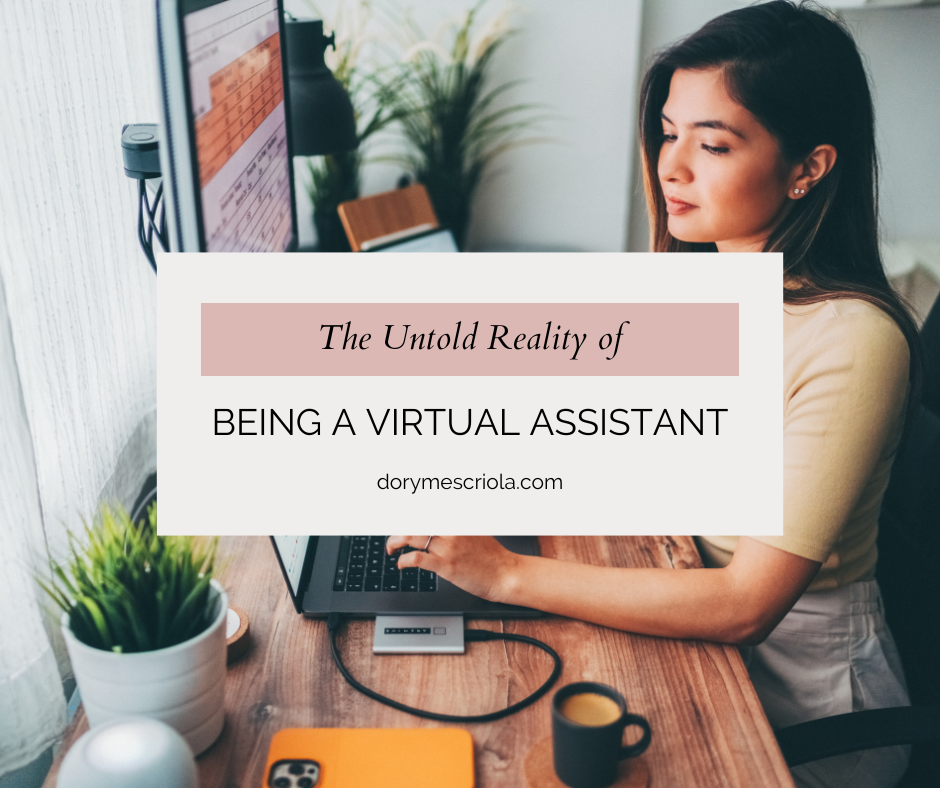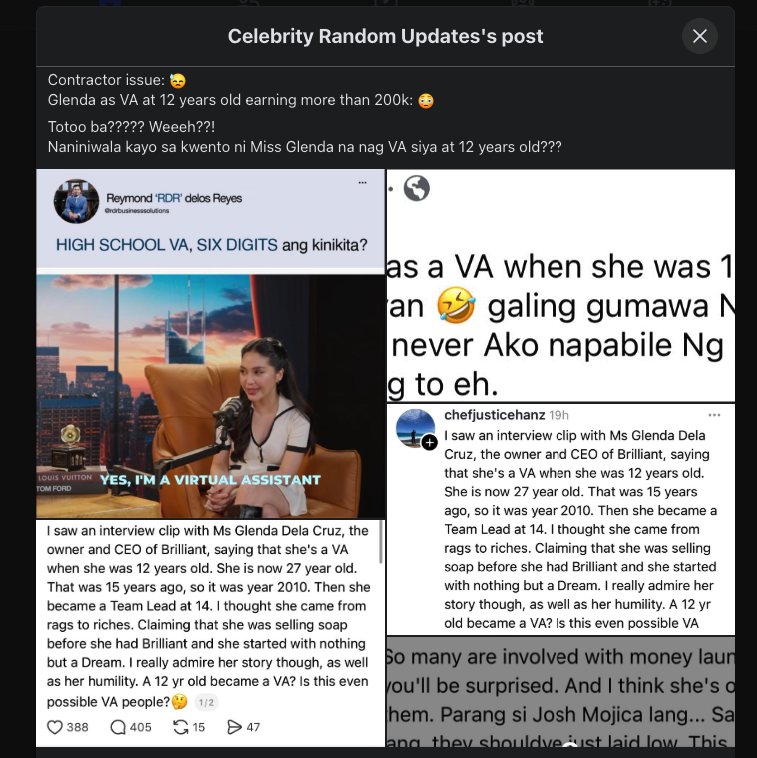Lately, I’ve been seeing a lot of posts online about how “amazing” it is to be a Virtual Assistant, like how you can just work from anywhere, earn dollars, and live the dream life. And honestly? It’s painful to see how glamorized this industry has become. Because behind the shiny reels and bold claims, there’s a reality that doesn’t get talked about enough.
Recently, there’s even been a viral story circulating (in the Philippines) about a girl who claims to be a Virtual Assistant earning billions, saying she started out in 2010 at just 12 years old (check out this post). The story blew up on Facebook and other platforms, and many people reacted with awe and curiosity. But as someone who has been in this industry for years, I couldn’t help but shake my head.
Let’s be real: virtual assistance wasn’t even widely recognized back in 2010, the way it is today. The global freelancing boom and the systems we use now simply weren’t in place yet. And to make billions of pesos, or worse, billions of dollars as a 12-year-old VA? It’s just not realistic. Yet the fact that so many people believed and shared that post says a lot about how misunderstood this profession is, and how dangerously easy it is to romanticize freelancing.
Virtual Assistance Isn’t a Shortcut to Success
One of the biggest misconceptions people have is that anyone can become a VA overnight. Social media makes it sound like all you need is a laptop, an internet connection, and suddenly you’re on the fast track to dollars. But the truth is, being a VA is just like any other profession. It requires hard skills, soft skills, and a lot of grit.
Read my previously written posts about 5 Surprising Truths I Learned After Becoming a Virtual Assistant and The Freelancer’s Blueprint: Key Factors for a Solid Start.
You don’t just “sit around and do easy tasks.” You need to learn project management, communication strategies, tech tools, social media platforms, website builders, editing software, and sometimes even sales or customer service. Some days you’re a researcher, other days you’re a troubleshooter, and sometimes you end up juggling multiple roles at once.
And growth doesn’t happen instantly. You don’t land premium-paying clients on your first try. Most of us start small, with entry-level tasks and modest rates, before slowly working our way up by building a portfolio, earning referrals, and consistently learning new skills.
The Emotional and Mental Toll That No One Talks About
What people rarely see in those Instagram-perfect reels is the weight that comes with freelancing. Unlike traditional jobs, where your paycheck comes at the end of the month no matter what, freelancing is full of uncertainty. Clients can disappear. Projects can get canceled. Income can fluctuate wildly. One month you’re abundant, and the next, you’re struggling to pay the bills.
There’s also the constant pressure to perform. Clients often expect fast turnarounds, flawless output, and proactive initiative. You’re not just executing tasks… you’re also managing expectations and relationships, which can be incredibly draining.
Add to that the loneliness of working alone. While office jobs may come with coworkers and a sense of community, freelancing can feel isolating. You spend hours in front of a screen, sometimes working late nights or early mornings to match different time zones. And when challenges arise, you don’t always have a team to lean on. YOU FIGURE THINGS OUT YOURSELF.
And of course, there’s the lack of benefits. No paid leave, no health insurance, no HR department to protect you. When you’re sick, you lose income. When you take a break, you risk losing momentum. That freedom people talk about? It comes at a cost most outsiders don’t realize.
Why the Glamourization Hurts
Don’t get me wrong…being a VA has changed my life in many positive ways. It’s given me opportunities to work with amazing clients, to grow in skills I never thought I’d master, and to design a lifestyle with more flexibility than a traditional job could give me. But it’s not all rainbows and roses.
The problem with viral stories and overly glamorized posts is that they set false expectations. They make it look like success as a VA is instant and effortless, when in reality, it takes time, persistence, and continuous learning.
I’ve seen people jump into freelancing thinking it’s the “easy way out,” only to get discouraged when they don’t land clients right away or when they realize the competition is tough. Some even give up altogether because the reality didn’t match the fantasy they were sold. And that’s heartbreaking because if they had been better prepared, they could have built something sustainable.
A Call for More Honest Conversations
This is why I believe we need to start telling the full story about virtual assistance. It’s not about discouraging people, but about giving them realistic expectations. Here’s what I wish more people knew:
- It takes skill-building. You need to invest in learning tools, communication, and processes before expecting high-paying clients.
- It takes time. A successful freelance career is built step by step, not overnight.
- It takes resilience. You’ll face rejection, burnout, and uncertainty. But if you push through, you’ll also discover growth and fulfillment.
Being a Virtual Assistant is a real career, not just a trend. It comes with real challenges, real sacrifices, and yes, real rewards. But the industry deserves to be seen for what it is and not as a fairy tale of instant wealth, but as a profession that requires dedication like any other.
So the next time you see a post about billion-dollar success stories or overnight freelancing riches, take it with a grain of salt. Behind every highlight reel is a reality that’s often much harder, but also much more meaningful than what social media lets on.






